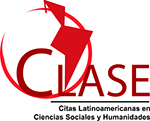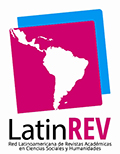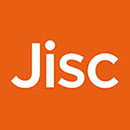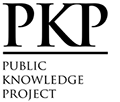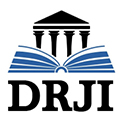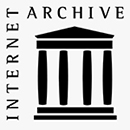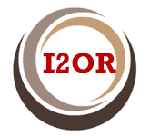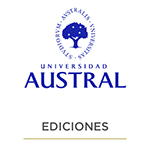¿Autoría algorítmica? Consideraciones sobre la autoría de las obras generadas por inteligencia artificial
DOI:
https://doi.org/10.26422/RIPI.2020.1300.vasPalabras clave:
autoría, inteligencia artificial, algoritmos, Propiedad IntelectualResumen
Los avances tecnológicos en materia de inteligencia artificial están haciendo replantear el sistema actual de protección de los derechos de autor. El presente trabajo de investigación busca realizar una aproximación al análisis sobre a quién le corresponde la autoría sobre las obras generadas por inteligencia artificial. Se discute si la legislación actual permite la llamada autoría algorítmica y se evalúan los diferentes escenarios que supone la determinación de la autoría de este tipo de obras. Se debate sobre si la autoría debe recaer en el programador, en el usuario del sistema o en la persona que encarga la obra. Se concluye que actualmente no existe una solución legal expresa y por ende debe procurarse una regulación acorde a los nuevos desafíos tecnológicos con base en el consenso de los diferentes actores que hacen vida en el mundo de la propiedad intelectual.
Descargas
Referencias
Antequera Parilli, R y Gómez, G. (1999). Legislación Sobre Derechos de Autor y Derechos Conexos. Caracas: Editorial Jurídica Venezolana.
Azuaje Pirela, M. (2020). Protección jurídica de los productos de la inteligencia artificial en el sistema de propiedad intelectual. Revista Jurídica Austral, 1(1), 319-342. https://doi.org/10.26422/RJA.2020.0101.azu.
Bercovitz, R. (2007). Comentarios al art. 10 LPI. En Bercovitz, R. (Coord.), Comentarios a la Ley de Propiedad Intelectual (3ª ed., pp. 151 y ss.). Madrid: Tecnos.
Boden, M. (2004). Creativity and Artificial Intelligence. Artificial Intelligence, 103(1), 347-356.
Boyden, B. (2016). Emergent Works. Columbia Journal of Law & The Arts, 39(3), pp. 377- 394). https://journals.cdrs.columbia.edu/wp-content/uploads/sites/14/2016/06/7-39.3-Boyden.pdf.
Brandt, A. K. y Eagleman, D. (2017). The runaway species: How human creativity remakes the world. Edimburgo: Canongate Books.
Bridy, A. (2012). Coding Creativity: Copyright and the Artificially Intelligent Author. Stanford Technology Law Review, 5, 1-28. https://ssrn.com/abstract=1888622.
Brow, N. I. (2017). Artificial Authors: a Case For Copyright in Computer-Generated Works. Science and Technology Law Review, 20(1), 1-41. https://doi.org/10.7916/stlr.v20i1.4766.
Colton, S. (2008). Creativity vs the perception of creativity in computational systems. https://www.semanticscholar.org/paper/Creativity-Versus-the-Perception-of-Creativity-in-Colton/a2eab9219192b14f5019e346566668bf4986f591.
Denicola, R. (2016). Ex Machina: Copyright Protection for Computer-Generated Works. Rutgers University Law Review, 251. https://ssrn.com/abstract=3007842.
Díaz, J. (2016). Daddy’s Car: inteligencia artificial como herramienta facilitadora de los derechos de autor. Revista de la Propiedad Inmaterial, (22), 83-100.
Fernández, H. (2011). Manual de los Derechos de Autor. Buenos Aires: Editorial Heliasta.
Frankish, K. y Ramsey, W. (Eds.). (2014). The Cambridge Handbook of Artificial Intelligence. Cambridge: Cambridge University Press. https://doi.org/10.1017/CBO9781139046855.
García, T. (2016). Análisis del criterio de originalidad para la tutela de la obra en el contexto de la ley de propiedad intelectual. Anuario Jurídico y Económico Escurialense, XLIX, 251-274.
Ginsburg, J. C. (2003). The Concept of Authorship in Comparative Copyright Law. Columbia Law School. https://ssrn.com/abstract=368481.
Ginsburg, J. C. (2018). People not machines: Authorship and what it means in Bern Convention. The International Review of Intellectual Property and Competition Law, 49(2), 131-135. https://link.springer.com/article/10.1007/s40319-018-0670-x.
Glasser, D. (2001). Copyrights in Computer-Generated Works: Whom, if Anyone, Do We Reward? Duke Law & Technology Review, 1. https://scholarship.law.duke.edu/dltr/vol1/iss1/24/.
Gopinath R., Ajay R. y Sanjay C. (2019). An Introduction to Machine Learning. California: Springer. https://www.springer.com/gp/book/9783030157289.
Grimmelmann, J. (2016). Copyright for Literate Robots. Iowa Law Review, (101). 657-681.
Hertzmamm, A. (2018). Can Computers Create Art? https://arxiv.org/pdf/1801.04486.pdf.
Hobbes, T. (1989). Leviatán, la Materia forma y poder de un estado eclesiástico y civil (1a ed.). Madrid: Alianza.
Hristov, K. (2017). Artificial intelligence and the copyright dilemma. IDEA: The IP Law Review, 57(431). https://papers.ssrn.com/sol3/papers.cfm?abstract_id=2976428.
Jordanous, A. (2012). A Standardised Procedure for Evaluating Creative Systems: Computational Creativity Evaluation Based on What it is to be Creative. Cognitive Computation, 4(3). https://doi.org/10.1007/s12559-012-9156-1.
Kaminski. M. (2017). Authorship, Disrupted: AI Authors in Copyright and First Amendment Law. Uniersity of California Davis Law Review, 51, pp. 589-616. https://ssrn.com/abstract=3086912.
Kulstad, M. y Laurence, C. (2013). Leibniz’s Philosophy of Mind. The Stanford Encyclopedia of Philosophy. https://plato.stanford.edu/cgi-bin/encyclopedia/archinfo.cgi?entry=leibniz-mind.
Kurt, D. (2018). Artistic Creativity in Artificial Intelligence. https://theses.ubn.ru.nl/bitstream/handle/123456789/5631/Kurt%2C_D.E._1.pdf?sequence=1.
Lipszyc, D. (2017). Derecho de autor y derechos conexos. Bogotá: Centro Regional para el Fomento del Libro en América Latina y el Caribe (CERLALC). https://cerlalc.org/publicaciones/derecho-de-autor-y-derechos-conexos/.
López de Mántaras Badia, R. (2013). Creatividad computacional. Arbor, 189(764), a082. http://dx.doi.org/10.3989/arbor.2013.764n6005.
Navas, S. (2018). Obras generadas por algoritmos. En torno a su posible protección jurídica. Revista de Derecho Civil, 5(2), pp. 273-291.
Parlamento Europeo. (2017). Informe con recomendaciones destinadas a la Comisión sobre normas de Derecho Civil sobre Robótica. A8-0005/2017. http://www.europarl.europa.eu/doceo/document/A-8-2017-0005_ES.pdf.
Pease, A. y Colton, S. (2011). On impact and evaluation in computational creativity: a discussion of the Turing Test and an alternative proposal. En Kazakov, D. y Tsoulas, G. (Eds.), Proceedings of AISB ’11: computing and philosophy (pp. 15-22). York: Society for the Study of Artificial Intelligence and Simulation of Behaviour.
Perry, M. y Margoni, T. (2010). From Music Tracks to Google Maps: Who Owns Computer Generated Works? Computer Law and Security Review, 26, 621-629. https://ssrn.com/abstract=1647584.
Ramalho, A. (2017). Will Robots Rule the (Artistic) World? A Proposed Model for the Legal Status of Creations by Artificial Intelligence Systems. https://ssrn.com/abstract=2987757.
Real Academia Española (s.f.). Diccionario de la lengua española (23ª ed., versión 23.3 en línea). https://dle.rae.es/inteligencia.
Ríos Ruiz, W. (2001). Los sistemas de inteligencia artificial y la propiedad intelectual de las obras creadas, producidas o generadas mediante ordenador. Revista La Propiedad Inmaterial, (3), 5-14.
Ritchie, G. D. y Hanna, F. K. (1984). AM: A case study in AI methodology. Artificial Intelligence, (23), 249-268.
Ruipérez de Azcárate, C. (2012). Las Obras del Espíritu y su Originalidad. Madrid: Editorial Reus.
Saiz García, C. (2019). Las obras creadas por sistemas de inteligencia artificial y su protección por el derecho de autor. InDret, 1. https://papers.ssrn.com/sol3/papers.cfm?abstract_id=3365458.
Samuelson, P. (1985). Allocating Ownership rights in computer-generated works. University of Pittsburgh Law Review, 47. https://www.semanticscholar.org/paper/Allocating-Ownership-Rights-in-Computer-Generated-Samuelson/accb9aafa77f06f97b2255bf3bdf836046c53714.
Shlomit Yanisky-Ravid y Vélez-Hernández, L. (2018). Copyrightability of Artworks Produced by Creative Robots and Originality: The Formality-Objective Model. Minnesota Journal of Law, Science & Technology, 19(1), 1-53. https://scholarship.law.umn.edu/mjlst/vol19/iss1/11.
Sorjamaa. T. (2016). I, Author, autorship and copyright in the age of artificial intelligence. https://helda.helsinki.fi/bitstream/handle/10138/166456/sorjamaa.pdf?sequence=3&isAllowed=y.
Strokes, P. (2005). Creativity from Constraints: The Psychology of Breakthrough. Springer.
Velasco, P. (2007). Psicología y Creatividad. Una Revisión desde los autoretratos. Caracas: Fondo Editorial de humanidades de la Universidad Central de Venezuela.
Publicado
Número
Sección
Licencia
Esta licencia permite copiar, distribuir, exhibir y representar la obra siempre y cuando se reconozca la autoría y se cite la obra de la forma adecuada. No se permite el uso comercial de la obra original ni la generación de obras derivadas.
Los autores garantizan a la Revista Iberoamericana de la Propiedad Intelectual el derecho de ser la primera publicación del trabajo.









